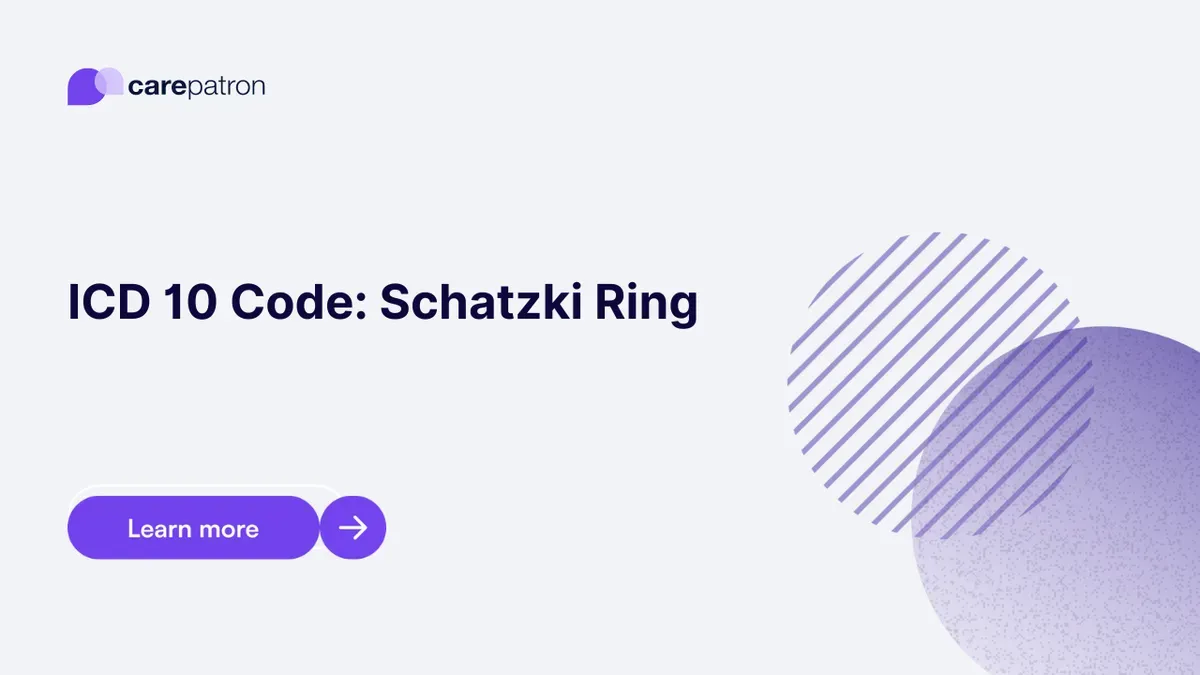
Schatzki Ring ICD-10-CM Codes | 2023
Discover the relevant ICD-10 codes for the Schatzki Ring. Ensure accurate diagnosis and billing with these codes for esophageal narrowing.
Use Code
Commonly asked questions
Use a Schatzki Ring ICD code when diagnosing or billing for the condition, typically when the esophageal ring is confirmed.
Yes, Schatzki Ring diagnoses are billable. Proper coding is essential for accurate billing and insurance claims.
Common treatments may include lifestyle modifications to manage GERD, medications, and sometimes endoscopic procedures to dilate the ring.
EHR and practice management software
Get started for free
*No credit card required
Free
$0/usd
Unlimited clients
Telehealth
1GB of storage
Client portal text
Automated billing and online payments
